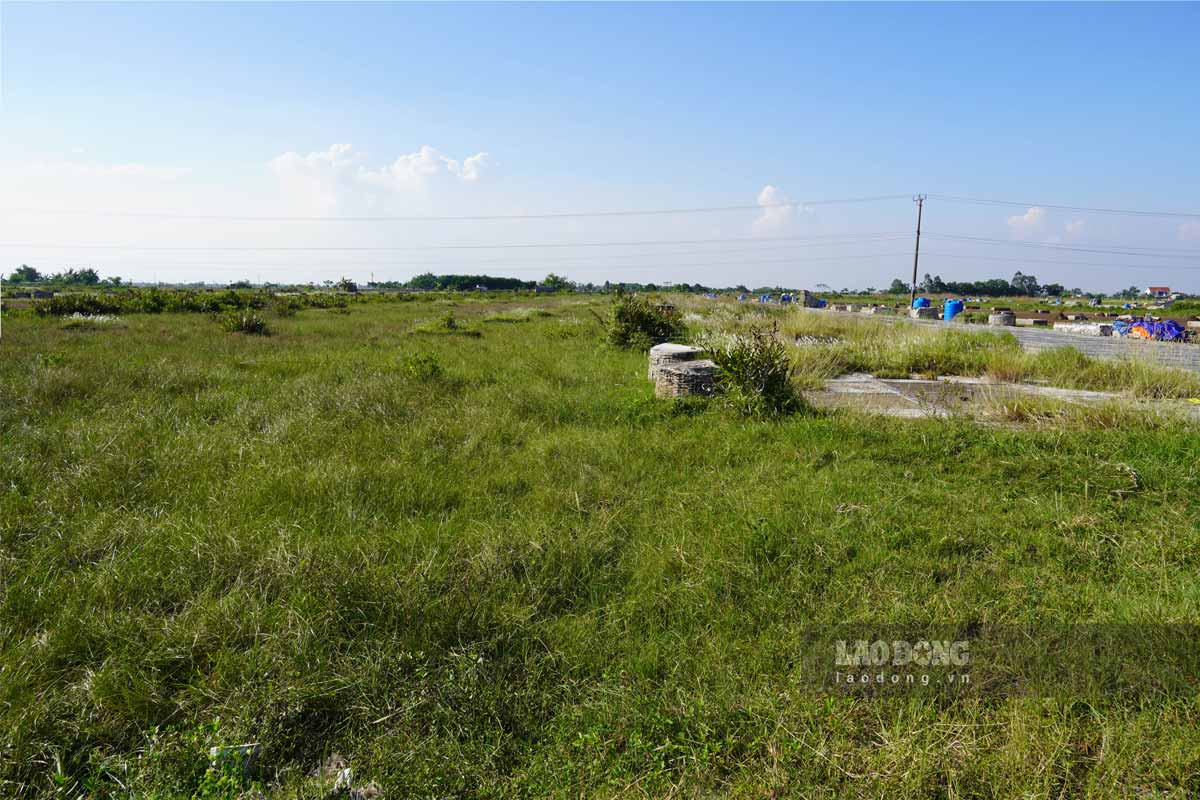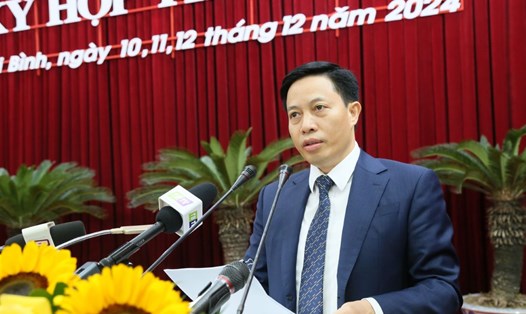According to the Department of Agriculture and Rural Development (DARD) of Truc Ninh district (Nam Dinh province), the whole district currently has 6,400 hectares of agricultural land. In recent years, the situation of people abandoning their fields has occurred in many communes, especially in areas close to urban areas and low-lying areas.
In 2024, the area of abandoned agricultural land in Truc Ninh district was 306 hectares. In addition to the difficulties in farming due to natural disasters, rats, flooding, etc., the farming conditions were also fragmented, small-scale, and backward, leading to low economic efficiency and people were not interested in the fields.
Mr. Mai Van Chien's family in Trung Dong commune, Truc Ninh district has 3 sao of rice fields but only grows one crop. Mr. Chien mentally calculated: "The total cost of plowing, harrowing, seeds, fertilizers, pesticides, and the cost of planting and harvesting for 1 sao of rice is estimated at about a million dong, while my family's productivity is only 300kg/sao/crop. After deducting expenses, the income from rice is too low, so we are no longer interested in the fields."
Mr. Pham Quang Minh - Head of the Department of Agriculture and Rural Development of Truc Ninh district said that in Truc Ninh district, farmers abandoned their fields because some areas in low-lying fields were often flooded during the rainy season, the investment cost for production was high, while the profit value was low. Besides, there was a shortage of human resources participating in agricultural production because most young people chose to work for companies to have a stable income, while those who were attached to the fields were middle-aged workers.
The Head of the Department of Agriculture and Rural Development of Truc Ninh district added that in order for farmers to stick with their fields and get rich on their own land, the district has encouraged land accumulation, concentration, production linkage, and development of OCOP products in Truc Ninh district, period 2020 - 2025. Through the program, there have been outstanding results, a number of concentrated commodity production areas, typical land accumulation and production linkage models have been formed. At the same time, it has helped to improve the area of abandoned fields, the area in 2020 was 417 hectares, by 2024 it will decrease to 306 hectares.
Not only in Nam Dinh province, in Thai Binh province, for many years now, salt prices have been low, so salt farmers in Thuy Hai commune (Thai Thuy district) have left dozens of hectares of salt fields abandoned and are looking for other jobs.

Mr. Vu Van Nhien (Tam Dong village, Thuy Hai commune, Thai Thuy district) said: "In the past, working in the salt industry was enough to eat, but in recent years, the price of salt has dropped so low that people only earn a few tens of thousands of VND/day, and then on rainy days they can't work, so many young people have quit the job. Only old people like us who can't do anything else stick with this job."
According to salt farmers here, Thuy Hai commune only has a few dozen households producing salt on a small scale. The salt production area according to the Government's plan is 50 hectares, but in reality it is almost abandoned.
"The reason why people quit the profession is because the price of salt has dropped sharply in recent years, the weather has changed a lot, causing difficulties in production, reducing the output and quality of salt, affecting the lives of salt farmers. Thai Binh province and the authorities are promoting solutions to develop the salt industry associated with spiritual tourism such as visiting the Temple and Shrine of the Lady of Salt, but they have not been implemented yet," said Mr. Ta Duy Binh - Chairman of the People's Committee of Thuy Hai commune (Thai Thuy district).











